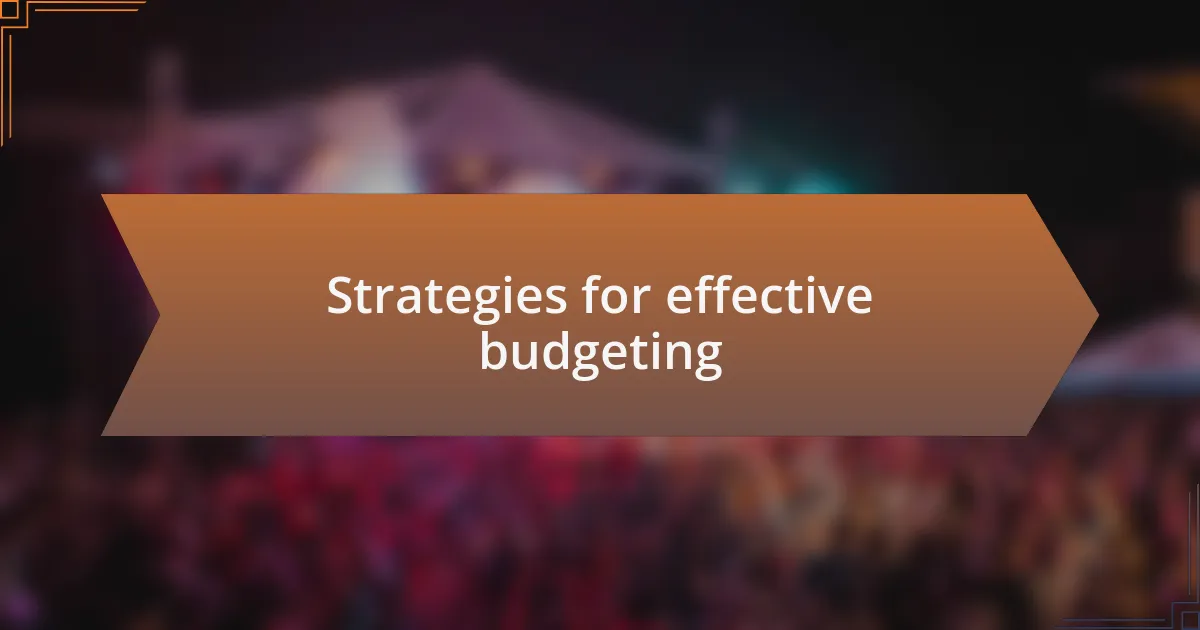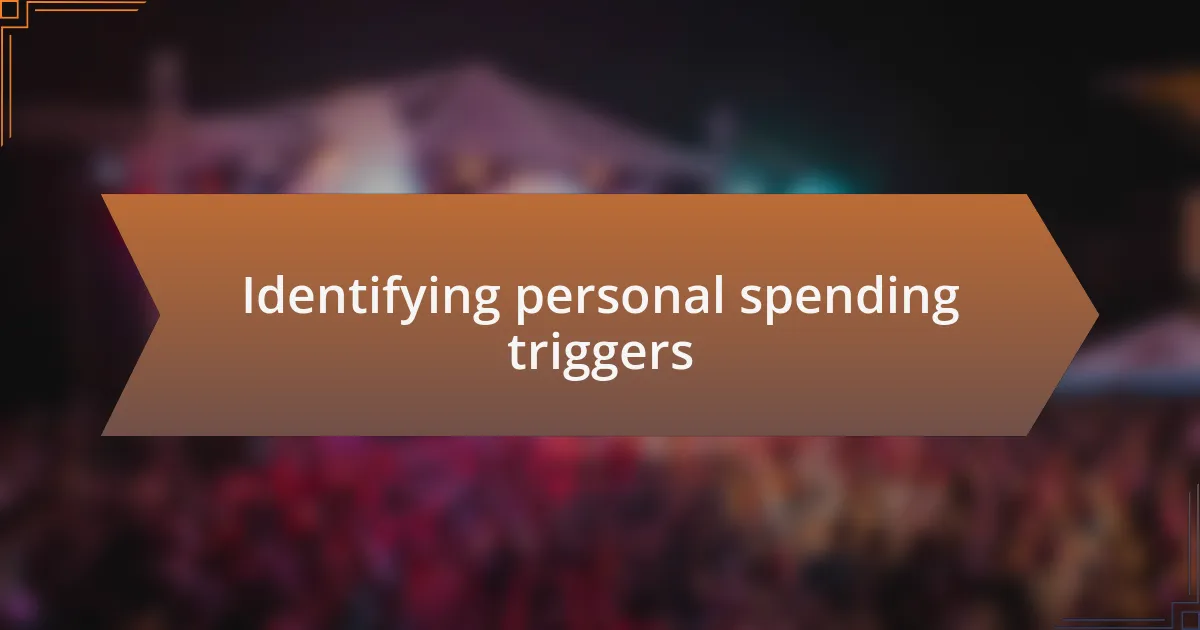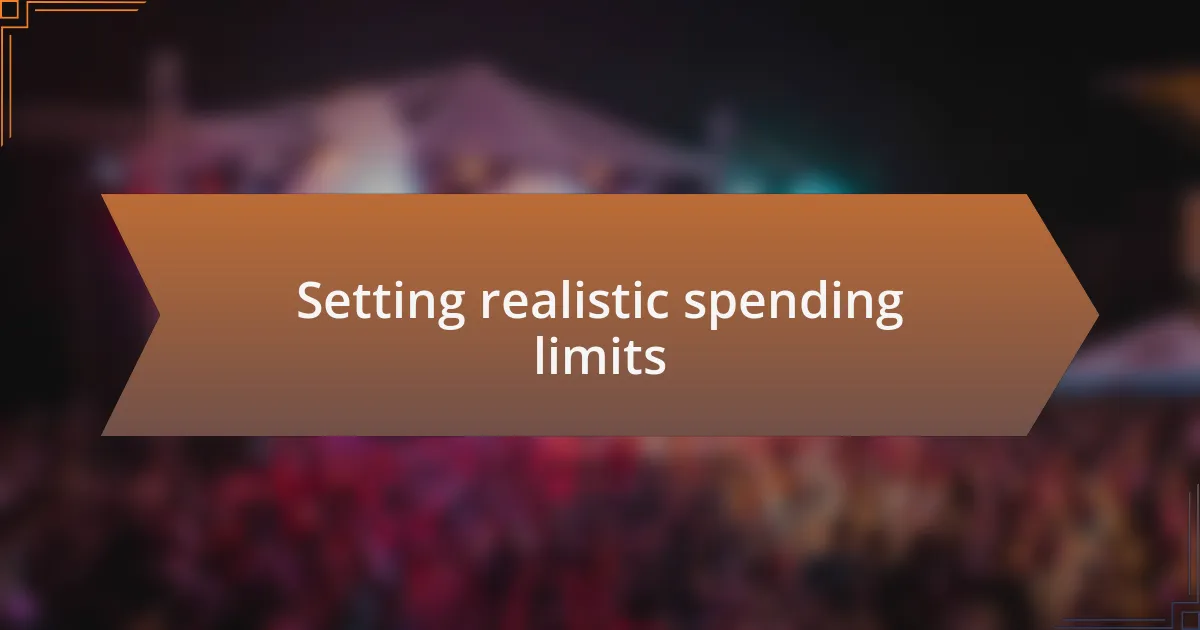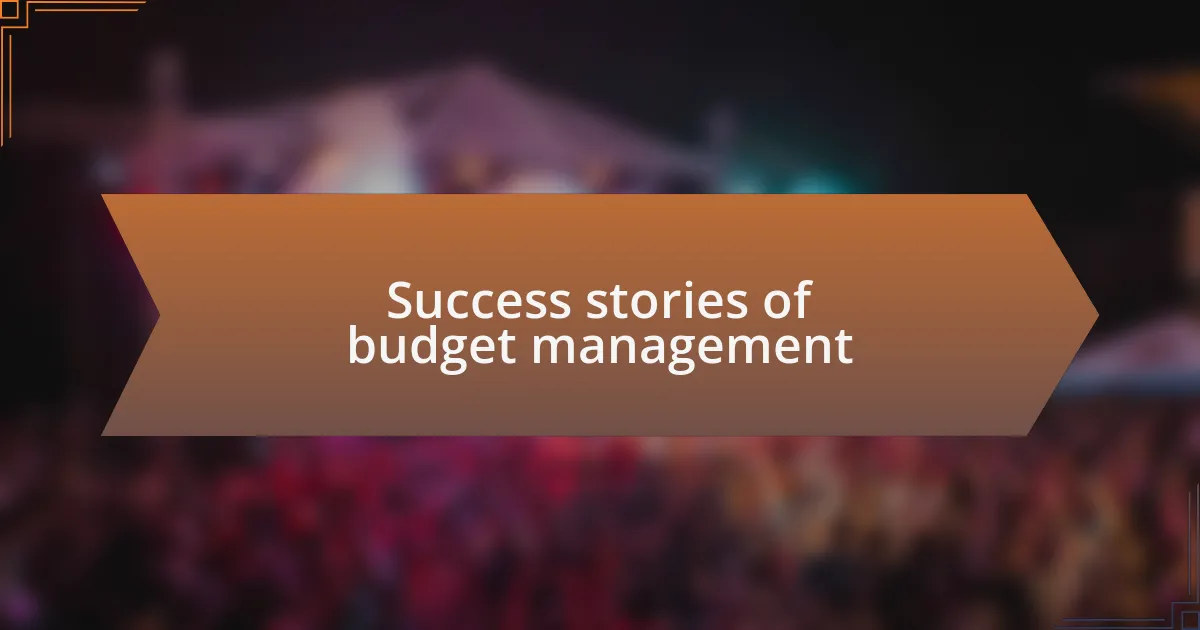Key takeaways:
- Emotional triggers and social pressures often lead to overspending during event planning.
- Establishing a detailed, itemized budget and realistic spending limits is essential for effective budget management.
- Creative sourcing from local vendors can provide unique options while saving costs.
- Implementing a spending tracking system helps maintain accountability and uncover hidden expenses.

Understanding overspending in events
Overspending in events often creeps in unnoticed, especially when emotions run high. I remember planning a milestone birthday party for a close friend. Every little detail felt essential, and before I knew it, I had spent far more than I had budgeted. Can you relate? It’s easy to lose sight of financial limits when you’re caught up in the excitement.
Another factor that contributes to overspending is the allure of “keeping up with the Joneses.” I found myself constantly comparing my event planning to others, leading to decisions that weren’t aligned with my financial reality. I asked myself, “Why did I think I needed those extravagant decorations?” Reflecting on that moment helped me understand that true value lies in meaningful experiences, not lavish displays.
It’s crucial to recognize the emotional triggers behind overspending. Fear of judgment or the desire to impress can push you to go beyond your means. In my case, I had to face the uncomfortable realization that the most memorable moments from those events came not from the opulence of the setting, but from the warmth of shared laughter and connection. How do we balance heart and finances without losing sight of what truly matters?

Strategies for effective budgeting
Planning events while sticking to a budget is all about prioritizing what matters most. I realized this when I was organizing a wedding reception. Instead of splurging on extravagant centerpieces, I opted for meaningful elements—like a photo wall featuring memories from the couple’s relationship. It turned out that guests were more interested in the stories behind the pictures than the cost of the decorations. Have I learned that focusing on the essence of the event can reduce costs? Absolutely!
Another strategy that worked wonders for me was creating a detailed, itemized budget before diving into planning. The first time I did this, I was shocked at how quickly costs can add up. By allocating specific amounts for each category—like food, décor, and entertainment—I gained clarity on where I could trim excess. Have you ever found hidden gems in your budget by examining it closely? I certainly did, and it allowed me to funnel extra funds toward things that truly enhanced the experience.
Lastly, I embraced the power of creative sourcing. I discovered that local vendors often offer great services at more reasonable prices than big-name businesses. For instance, I turned to a neighborhood bakery for custom cupcakes rather than a larger, well-known chain. The result? Unique designs that felt personal and a significant savings on costs. How often do we forget that creativity can be just as valuable as a big budget? This experience taught me that an event’s charm doesn’t come from how much you spend, but rather from the thought and creativity you put into it.

Identifying personal spending triggers
Recognizing my personal spending triggers was a game-changer for my budgeting journey. For instance, I noticed that when I was stressed or overwhelmed, my impulse to buy something—whether it was a trendy outfit or fancy decor—skyrocketed. That made me ponder: How often do we reach for our wallets as a way to cope with emotions or to seek comfort? Identifying those moments allowed me to pause and reflect before making purchases, giving me a chance to ask if I truly needed what I was about to buy.
Another realization came when I reflected on social situations. During event planning meetings, I often felt pressure to impress others with lavish choices. This led to overspending just to keep up appearances. Have you ever felt that urge? It made me realize how important it is to define my values and intentions in my spending habits. By sticking to what aligns with my vision for the event, I began to feel more at ease and confident in my decisions, ultimately leading to happier outcomes without breaking the bank.
Finally, I learned that retail therapy was more than just a phrase; it was a significant trigger for me. When I felt down, I would often hit the stores, looking for a quick fix through purchases. This awareness helped me develop healthier coping strategies, like going for a walk or diving into a good book instead. Have you ever taken a step back to consider how your emotions influence your spending? This newfound perspective reduced my impulse buys and turned my focus back to what truly mattered—making each event a memorable experience without financial regret.

Setting realistic spending limits
Setting realistic spending limits is crucial in preventing overspending. I remember one particular event where my budget spiraled out of control simply because I didn’t set clear limits ahead of time. It was a networking event, and I felt compelled to allocate more funds for extravagant decorations, thinking it would elevate the overall experience. Have you ever been in a situation where the excitement led to a budget blowout?
To avoid this in the future, I began to establish strict spending thresholds before planning any event. I would sit down and assess my total budget, breaking it down into specific categories—venue, food, decor, and entertainment. This approach gave me a clearer picture of where my money was going and reinforced the importance of sticking to those limits. It’s a straightforward method, but how often do we question whether our initial estimates are realistic?
Moreover, I learned to factor in a cushion for unexpected expenses, which can be a lifesaver. I once oversaw an event that encountered last-minute changes, and because I only had the base budget in mind, I found myself scrambling to cover additional costs. Now, I’m much more mindful, establishing a small percentage of my overall budget—around 10%—as a reserve. This way, I feel more prepared and less anxious about financial surprises. It’s about creating a guideline that maintains a balance between aspiration and reality. Does it resonate with you to build that safety net?
![]()
Developing a spending tracking system
Developing a spending tracking system transformed how I approach budgeting. At first, I jotted down expenses haphazardly, but this often led to overlooking small but significant costs. One time, I organized an event and only focused on the major expenses, neglecting the little ones like printing and transportation. By the end, I was shocked at how quickly they added up!
That realization pushed me to create a detailed spreadsheet to meticulously track every dollar spent. I categorized each expense and updated the sheet in real time. This method not only kept me accountable but also highlighted spending patterns I hadn’t noticed before. Have you ever tracked your spending and been surprised by where it’s truly going? Once, I discovered that my enthusiasm for fancy catering was overshadowing more essential aspects, like audio-visual equipment.
Incorporating apps into my tracking process further streamlined my efforts. With notifications and budgeting features, I could track spending on the go, reminding me to stay within the limits I had set. This tech-savvy approach has alleviated so much stress; I now feel confident when making purchasing decisions during event planning. How empowering is it to have clarity on where every dollar is going?

Success stories of budget management
Success stories of budget management can be incredibly inspiring, especially when you see the tangible results of prudent financial habits. I remember working alongside a colleague who was notorious for overspending on event decorations. After a pivotal experience where we had to trim our budget drastically, she adopted a DIY approach. By utilizing her creative skills, she crafted beautiful centerpieces from affordable materials, ultimately producing a stunning result that wowed our attendees. Who knew that a few craft supplies could save us so much?
Another anecdote that stands out is my own journey with a tight budget for a corporate retreat. Initially overwhelmed by the scope of the event, I partnered with local vendors willing to offer discounts for bulk services. My negotiations not only saved money but also fostered great relationships with community businesses. Was the extra effort worth it? Absolutely! The positive feedback from attendees and the successful execution of the event made every bit of negotiating worthwhile.
It’s fascinating how effective budget management can lead to unexpected opportunities. I recall a time when, due to a strict budget, my team turned to more sustainable practices, like digital invitations and eco-friendly materials. Not only did this save costs, but it also resonated deeply with participants, heightening their overall experience. Can budget constraints truly enhance creativity? My experiences suggest they certainly can.